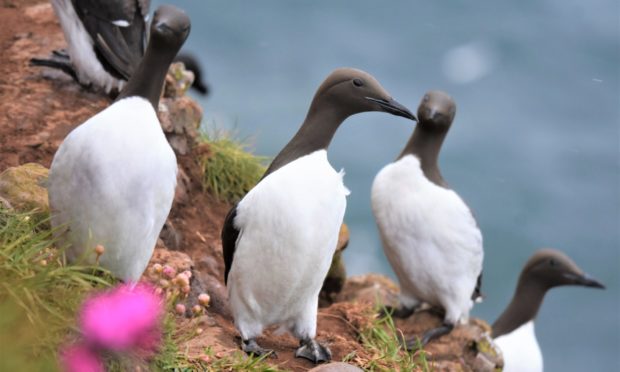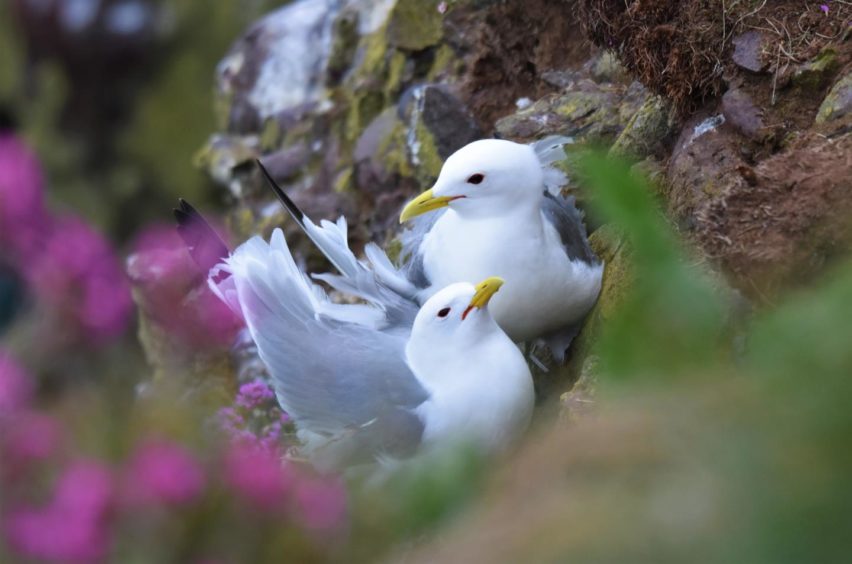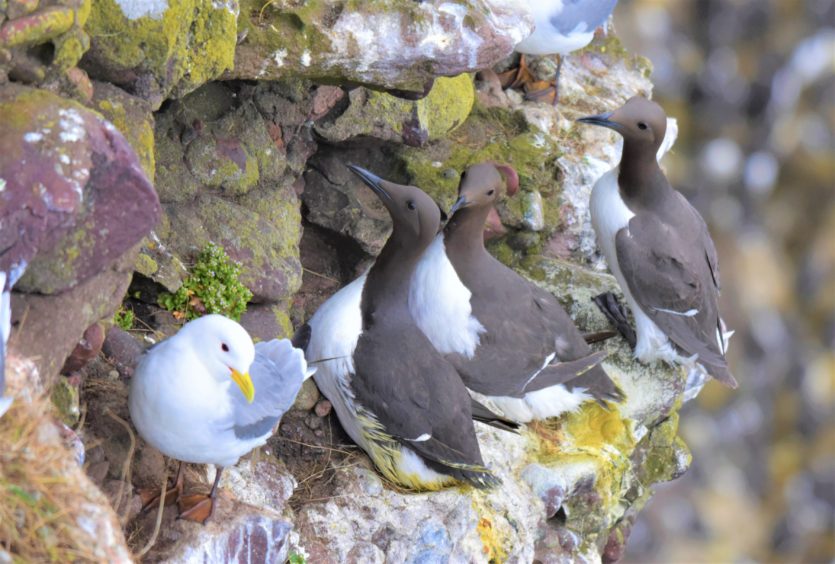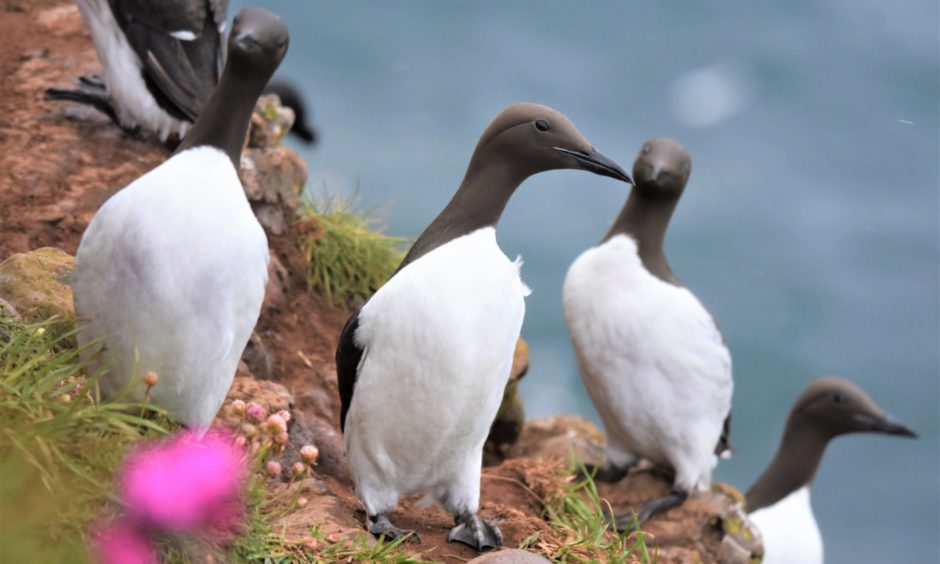It is hard to imagine a more absorbing scene of nature’s over-whelming urge to procreate than from where I was standing on top of the towering seabird cliffs at Fowlsheugh, south of Stonehaven.
There were thousands of dramas being played out; guillemots courting, razorbills bickering, and gulls patrolling for unguarded eggs to snatch.
Fowlsheugh embodies nature’s wild soul, and the noise of the swirling seabirds, the heavy aroma of guano and the sight of thousands of bobbing birds on out on water was totally addictive.
This is a seabird city, a place of life and death, where one becomes awed and bewildered in equal measure by its sheer vibrancy and clamour.
As ever, on my first arrival at this RSPB reserve, it was hard to decide where to look, such was the plethora of activity.
A constant stream of kittiwakes swooped low over the clifftops to settle on a grassy slope where they eagerly collected nesting material.
Once their yellow beaks were full, they spiralled down below the cliff edge, using eddies from the swirling air currents to propel them towards their nesting ledges.
Kittiwakes
Kittiwakes are elegant little gulls, intricate in form and graceful in flight.
Yet they are among the toughest creatures around, spending most of the year out at sea in search of small surface-swimming fish or planktonic animals, venturing as far as Greenland and eastern Canada in their wanderings.
The storms these birds must have endured over tumultuous seas are unimaginable, blown like wind-blasted and fragile fragments over the tempestuous, bitter cold ocean.
Guillemots
Nearby, a group of guillemots were courting, their heads bobbling up and down, and some couples gently nibbled one another with their long, dagger-like beaks.
Such harmonious scenes were often precarious, and spats would frequently break out between rival males, or perhaps from females not yet ready to relent to the continuous amorous testosterone-fuelled attentions unleashed upon them.
A sloping rock shelf half-way down once section of cliff thronged with guillemots, bodies tightly packed like sardines, and their abundance a direct reflection of the sea’s rich bounty.
Razorbills
Razorbills were present, too, but in much smaller numbers than the guillemots and they were less sociable, tending to group in pairs and sometimes rattling their bills with one another.
Their distinctive serrated and laterally compressed bills are perfectly designed for gripping onto sandeels and butterfish.
I found a small mound of black feathers; the remains of a jackdaw that had been plucked out of the sky by a marauding peregrine falcon.
These cliffs would provide plentiful pickings for a pair of peregrines, a brimming larder from which to raise their own family.
On my return journey along the clifftops, new seabird dramas continually unveiled themselves at every turn.
I adore Fowlsheugh, a wild sanctuary of contemplation, and my heart swells with tumultuous emotion on each visit, an uncontrollable heaving that leaves my mind spinning.
Info
Fowlsheugh, which means ‘bird cliff’, is one of the largest and most spectacular seabird colonies on mainland Britain, comprising two miles of towering and dramatic sandstone cliffs.













